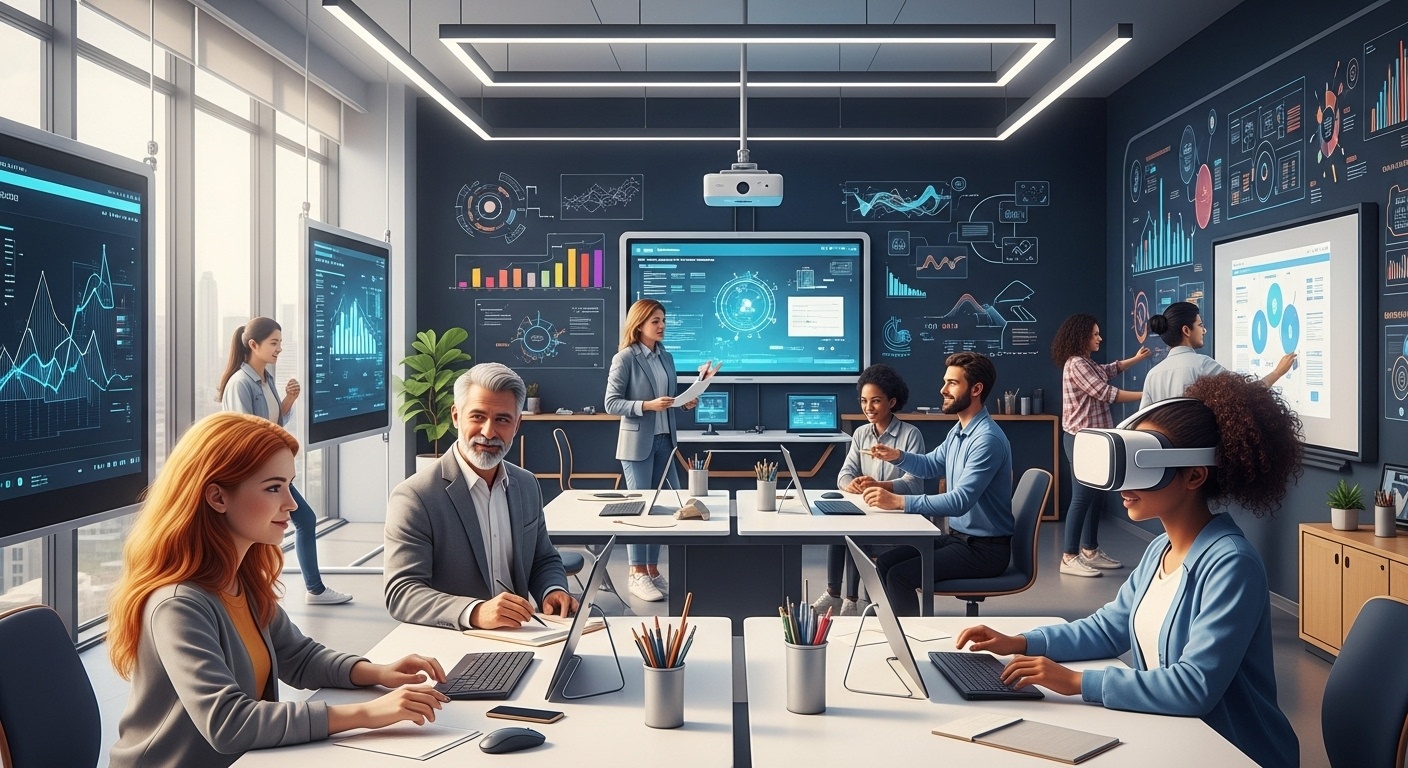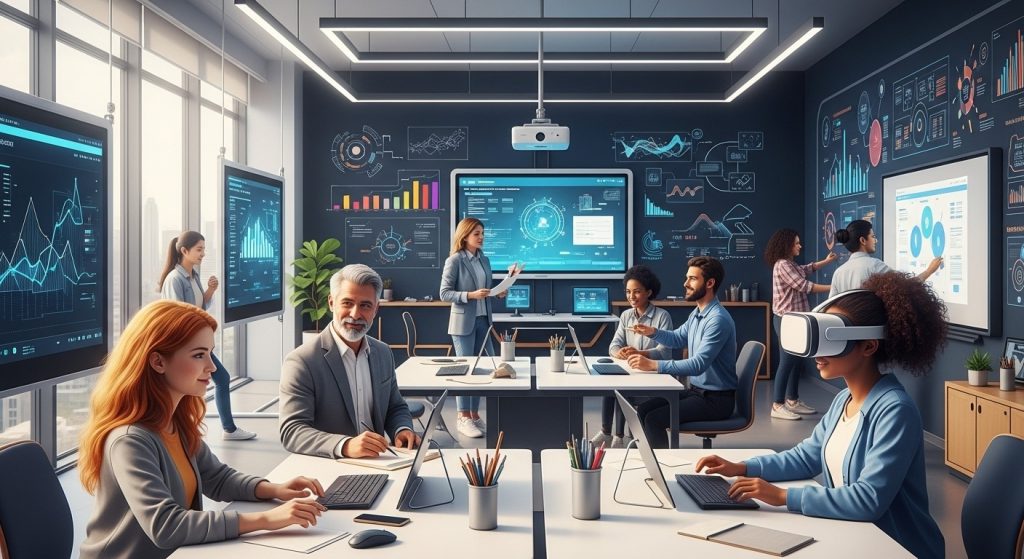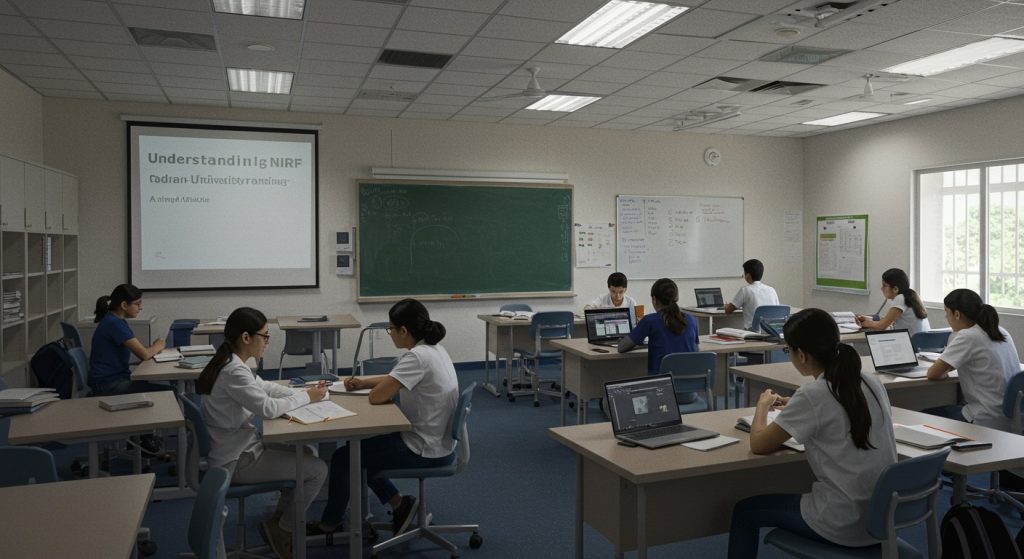India’s state universities, historically bastions of accessible education, now stand at a critical juncture. The surge in online learning necessitated by recent disruptions, coupled with the National Education Policy 2020’s emphasis on multidisciplinary approaches, are reshaping the landscape. We see institutions like Anna University piloting AI-driven personalized learning platforms, while others are grappling with integrating vocational skills into traditional degree programs, mirroring global trends in competency-based education. This exploration delves into these emerging trends, examining how state universities are adapting curricula, embracing technology. Forging industry partnerships to prepare students for a rapidly evolving job market, ultimately redefining the future of learning within the Indian context.

Democratization of Education Through Online Learning Platforms
The digital revolution is rapidly transforming state university education in India, primarily through the democratization of education via online learning platforms. These platforms are breaking down geographical barriers, offering access to quality educational resources to students in remote areas and those unable to attend traditional brick-and-mortar institutions. This shift is particularly crucial in a country as diverse and vast as India, where access to quality education has historically been uneven.
Key Aspects of Online Learning Platforms:
- Accessibility: Online platforms enable students from diverse socio-economic backgrounds to access educational content, thereby promoting inclusivity.
- Flexibility: Students can learn at their own pace, fitting their studies around other commitments, which is especially beneficial for working professionals and students with family responsibilities.
- Cost-Effectiveness: Online courses often reduce the financial burden on students by eliminating costs associated with commuting, accommodation. Physical learning materials.
Examples of Online Learning Platforms:
- SWAYAM (Study Webs of Active-Learning for Young Aspiring Minds): An initiative by the Indian government that offers a wide array of courses from school level to postgraduate level, covering various disciplines.
- NPTEL (National Programme on Technology Enhanced Learning): A joint initiative of the IITs and IISc, providing online courses and certification in engineering, science. Humanities.
- Coursera and edX: Global platforms partnering with Indian universities to offer specialized courses and degrees.
Integration of Artificial Intelligence (AI) in Teaching and Learning
Artificial Intelligence (AI) is poised to revolutionize the educational landscape within India’s state universities by personalizing learning experiences and automating administrative tasks. AI-driven tools can assess student performance data to identify learning gaps, provide customized feedback. Recommend relevant resources. This approach enhances the efficiency of the teaching process and caters to the individual needs of each student.
AI Applications in Education:
- Personalized Learning: AI algorithms can adapt to individual learning styles, providing tailored content and pacing.
- Intelligent Tutoring Systems: These systems offer personalized guidance and support to students, mimicking the role of a human tutor.
- Automated Assessment: AI can automate the grading of assignments and exams, freeing up educators’ time for more strategic tasks.
- Predictive Analytics: AI can predict student performance and identify at-risk students, enabling timely intervention and support.
Real-World Use Case:
A state university in Karnataka implemented an AI-powered learning platform that provides personalized learning paths for engineering students. The platform analyzes student performance data to identify areas where students are struggling and provides targeted support, resulting in a 20% improvement in student grades.
Challenges and Considerations:
- Data Privacy: Ensuring the privacy and security of student data is crucial when implementing AI-driven systems.
- Algorithmic Bias: AI algorithms can perpetuate existing biases if not carefully designed and trained.
- Digital Divide: Access to technology and internet connectivity remains a challenge in many parts of India, hindering the widespread adoption of AI in education.
Emphasis on Skill-Based Education and Vocational Training
Recognizing the need to bridge the gap between academia and industry, state universities in India are increasingly emphasizing skill-based education and vocational training. This shift aims to equip students with practical skills and knowledge that are directly relevant to the job market, thereby enhancing their employability and entrepreneurial capabilities.
Key Initiatives:
- Industry Collaborations: Universities are partnering with industries to develop curricula that align with industry needs and provide students with internship opportunities.
- Vocational Courses: Universities are offering a wider range of vocational courses in fields such as IT, healthcare. Hospitality.
- Skill Development Centers: Universities are establishing skill development centers to provide students with hands-on training in specific skills.
- Entrepreneurship Programs: Universities are offering entrepreneurship programs to encourage students to start their own businesses.
Benefits of Skill-Based Education:
- Enhanced Employability: Students with practical skills are more likely to secure jobs after graduation.
- Increased Entrepreneurship: Skill-based education empowers students to start their own businesses and create jobs.
- Economic Growth: A skilled workforce contributes to economic growth and development.
Augmented Reality (AR) and Virtual Reality (VR) in Immersive Learning
Augmented Reality (AR) and Virtual Reality (VR) technologies are transforming the way students learn by creating immersive and engaging learning experiences. AR overlays digital content onto the real world, while VR creates fully immersive digital environments. These technologies can enhance student understanding and retention by providing interactive and hands-on learning opportunities.
Definitions:
- Augmented Reality (AR): Technology that superimposes a computer-generated image on a user’s view of the real world, thus providing a composite view.
- Virtual Reality (VR): The use of computer technology to create a simulated environment. Unlike traditional user interfaces, VR places the user inside an experience.
Applications in Education:
- Interactive Simulations: AR and VR can be used to create interactive simulations of complex concepts, such as molecular structures or historical events.
- Virtual Field Trips: Students can take virtual field trips to historical sites or remote locations without leaving the classroom.
- Hands-On Training: AR and VR can provide students with hands-on training in fields such as medicine, engineering. Manufacturing.
Real-World Use Case:
A medical college in Tamil Nadu uses VR to simulate surgical procedures, allowing students to practice their skills in a safe and controlled environment. This has resulted in a significant improvement in student confidence and competence.
Focus on Research and Innovation
State universities in India are increasingly focusing on research and innovation to drive economic growth and address societal challenges. This involves promoting research activities among faculty and students, establishing research centers. Fostering collaborations with industry and other research institutions.
Key Initiatives:
- Funding for Research: Universities are allocating more resources to fund research projects.
- Research Centers: Universities are establishing research centers in areas such as renewable energy, healthcare. Agriculture.
- Industry Collaborations: Universities are collaborating with industry to conduct research that is relevant to industry needs.
- Incubation Centers: Universities are establishing incubation centers to support student startups and entrepreneurs.
Benefits of Research and Innovation:
- Economic Growth: Research and innovation drive economic growth by creating new products, services. Industries.
- Societal Impact: Research and innovation can address societal challenges such as poverty, disease. Climate change.
- Enhanced Reputation: A strong research program enhances the reputation of the university and attracts top faculty and students.
The Role of Top State Universities in India
Top State Universities in India play a crucial role in shaping the future of education and driving innovation. These institutions often lead the way in adopting new technologies, implementing innovative teaching methods. Fostering research and development. By setting a high standard for quality and excellence, they inspire other universities to follow suit and contribute to the overall improvement of the education system.
Examples of Top State Universities leading the way:
- Implementing advanced online learning platforms to reach a wider audience.
- Partnering with industries to offer skill-based courses that meet the needs of the job market.
- Investing in research and development to drive innovation and address societal challenges.
Conclusion
The evolving landscape of state university education in India demands proactive adaptation. We’ve explored the crucial shift towards blended learning models, the integration of AI-driven personalized learning experiences. The increasing importance of industry-aligned curricula. Now, it’s time to act. Universities should prioritize faculty development in emerging technologies and pedagogical approaches, investing in resources that enable them to effectively utilize new tools. Students, embrace lifelong learning – take online courses, attend workshops. Actively seek out opportunities to enhance your skills beyond the classroom. For example, focus on programs that boost your career prospects. (Engineering Clubs: Unlock University Benefits and Boost your Career Prospects). Remember, the future of learning is not about passively receiving data. About actively constructing knowledge and developing the skills necessary to thrive in a rapidly changing world. Embrace the challenge, stay curious. Never stop learning.
More Articles
Online vs. In-Person Computer Science Degree: Which Path is Best?
Automation’s Impact on Future Jobs: What Skills Will Be Essential?
Unlock Your Potential: Business Management Degree Benefits Explored
Advanced Engineering Labs: Key Equipment for Tomorrow’s Innovators at Universities
FAQs
Okay, so everyone’s talking about the ‘future of learning’ in universities. What’s really changing for students in Indian state universities?
Good question! It’s less about radical overnight changes and more about a steady evolution. Think increased focus on skills that employers actually want (like critical thinking and problem-solving), more tech integration in classrooms. A push for programs that are relevant to the local job market. , universities are trying to make sure you’re not just memorizing facts. Are actually prepared for a career.
What kind of tech integration are we talking about? Will I need to build my own AI?
Haha, probably not building AI from scratch! But expect to see more online learning platforms, maybe even some virtual reality experiences for certain subjects. It’s also about using data analytics to personalize your learning journey and give you feedback on where you need to improve. The goal is to make learning more engaging and accessible, not to turn everyone into coders (unless you want to, of course!) .
Are state universities actually becoming more flexible? I heard something about ‘multiple entry and exit points’… what’s that about?
You heard right! The idea is to let you customize your degree a bit more. So, if you need to take a break from your studies for a job or personal reasons, you can leave with some sort of certification (like a diploma) and then come back later to complete your degree. It’s all about recognizing that everyone’s life journey is different and giving you more control over your education.
What about subjects that are super niche or ‘traditional’? Will they get left behind in this whole techy future?
Not necessarily! While there’s definitely a push for STEM fields and practical skills, the humanities and social sciences are still crucial. Many universities are focusing on interdisciplinary approaches, which means combining traditional subjects with modern skills. For example, you might study history and then learn data analysis to uncover historical trends in a new way. It’s about making these subjects relevant in the 21st century.
I’m worried about the cost. Will all this fancy tech make university even more expensive?
That’s a valid concern. While some changes might increase costs, many state universities are actively working to make education more affordable and accessible. This includes offering scholarships, financial aid programs. Even exploring open educational resources (OER), which are free or low-cost learning materials. The goal is to leverage technology to reduce costs in the long run.
So, what’s the biggest hurdle for Indian state universities in embracing these changes?
Honestly, it’s a combination of things. Funding is always a challenge. Then there’s the need for teacher training – professors need to learn how to effectively use these new technologies and teaching methods. And finally, there’s some resistance to change itself. But overall, there’s a growing awareness that these changes are necessary to prepare students for the future.
What skills should I focus on developing NOW to be ready for this ‘future of learning’?
Great question! Focus on those ‘soft skills’ everyone talks about: critical thinking, problem-solving, communication. Collaboration. Learn how to learn independently and adapt to new situations. And don’t be afraid to experiment with technology – get comfortable using online tools and platforms. , be a curious and adaptable learner!



